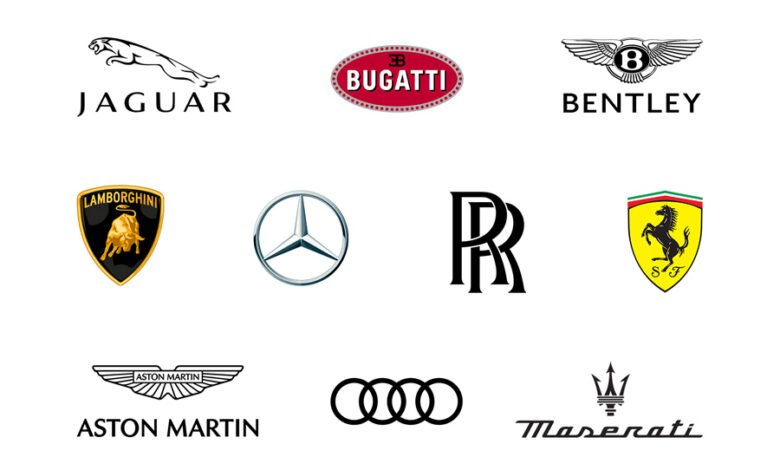
Introduction
In the fast-paced world of automobiles, car logos serve as game-changers in establishing brand identity and leaving a lasting impression. The stories behind these automotive symbols are often rich in history and packed with fascinating details. From the elegance of the Mercedes-Benz logo to the fierce power of the Ferrari emblem, each car logo has a unique tale to tell.
In this article, we delve into the captivating narratives behind some of the world’s most iconic car logos. Uncover the hidden meanings and inspirations that shaped these distinct emblems, and gain a deeper appreciation for the thought and creativity that goes into their design.
Whether it’s the mythical origin of Lamborghini’s raging bull or the nod to the classic Chevrolet nameplate, these car logos have become more than just symbols – they represent the values, aspirations, and legacies of the brands they represent. Get ready to discover the stories behind these automotive icons and learn how they have helped shape the automotive landscape as we know it today
The History of Car Logos
Car logos have a long and storied history dating back to the early days of the automotive industry. In the late 19th century, when cars were still a novelty, manufacturers began to realize the importance of branding. They wanted a way to distinguish their vehicles from the competition and create a visual identity that would resonate with consumers.
The first car logos were often simple and straightforward, featuring the company name or initials. As the industry grew and competition intensified, car logos became more elaborate and artistic. Manufacturers started incorporating symbols and imagery that represented their brand’s values and aspirations. The Ford logo, for example, features a stylized blue oval that represents strength, reliability, and innovation.
Over the years, car logos have evolved alongside the industry itself. They have become more than just markers of brand identity; they have become powerful symbols that evoke emotions and tell stories. Whether it’s the iconic bowtie of Chevrolet or the roaring lion of Peugeot, car logos have become an integral part of the automotive experience.
Famous Car Logos and Their Meanings
Each car logo has a unique meaning and story behind it. Let’s explore some of the most famous car logos and uncover the symbolism that lies within.
1. Mercedes-Benz – The Mercedes-Benz logo is a perfect example of elegance and sophistication. The three-pointed star represents the brand’s dominance over land, sea, and air. It harks back to the company’s origins as a manufacturer of engines for various modes of transportation.
2. Volkswagen – The Volkswagen logo is one of the most recognizable in the world. Its origins can be traced back to Nazi Germany, where Ferdinand Porsche designed the “People’s Car” or “Volkswagen” at the request of Adolf Hitler. The logo features a “V” over a “W,” representing the German words for “people’s car.” Despite its controversial beginnings, the Volkswagen logo has become a symbol of reliability and affordability.
3. Lamborghini – The raging bull logo of Lamborghini is a symbol of strength and aggression. It is said to have been inspired by the founder, Ferruccio Lamborghini’s zodiac sign, Taurus. The logo perfectly captures the raw power and performance that Lamborghini cars are known for.
Unique Stories Behind Popular Car Logos
Behind every popular car logo lies a unique story that reflects the brand’s values and aspirations. Let’s delve into some of these fascinating tales.
1. Chevrolet – The iconic bowtie logo of Chevrolet has a simple yet intriguing origin story. It is said to have been inspired by the wallpaper in a Paris hotel room that William C. Durant, the co-founder of Chevrolet, stayed in. He was so captivated by the pattern that he tore a piece of it and kept it as a memento. Years later, he used that pattern as the inspiration for the bowtie logo that would become synonymous with Chevrolet.
2. Ferrari – The prancing horse logo of Ferrari is synonymous with power and speed. It was inspired by a World War I flying ace, Count Francesco Baracca, who painted a prancing horse on his plane. Enzo Ferrari, the founder of Ferrari, adopted the symbol as a tribute to Baracca and his extraordinary bravery.
3. BMW – The BMW logo is a perfect example of a logo that has stood the test of time. It features a rotating propeller against a blue sky background, representing the brand’s origins as an aircraft engine manufacturer. The logo also pays homage to the colors of the Bavarian flag, further establishing BMW’s German heritage.
Hidden Messages in Car Logos
Car logos often contain hidden messages and clever design elements that add an extra layer of intrigue. Let’s uncover some of these hidden messages.
1. Toyota – The Toyota logo may look like a simple arrangement of letters, but it actually contains several hidden symbols. The overlapping ovals form the letter “T,” which stands for “Toyota.” The larger oval represents the world, while the smaller oval inside symbolizes the heart of the customer. This logo reflects Toyota’s commitment to global reach and customer satisfaction.
2. Audi – The Audi logo is a perfect example of simplicity with hidden depth. The four rings represent the merger of four independent automakers – Audi, DKW, Horch, and Wanderer. Each ring represents one of these companies, coming together to form the Audi brand we know today. This logo is a testament to Audi’s rich history and the strength that comes from collaboration.
3. Mini – The Mini logo may seem straightforward, but it contains a hidden message for eagle-eyed observers. The word “Mini” is spelled out in a bold, lowercase font, with a small arrow placed above the letter “i.” This arrow symbolizes the small size and nimbleness of Mini cars, as well as their ability to navigate through tight spaces with ease.
Iconic Car Logos and Their Impact on Branding
Car logos play a crucial role in branding and marketing. They are often the first point of contact between a consumer and a brand, and they have the power to leave a lasting impression. Let’s explore how car logos have shaped the automotive industry and influenced consumer perceptions.
Car logos have become more than just symbols; they have become a visual shorthand for a brand’s values, aspirations, and legacy. For example, the iconic Volkswagen logo instantly evokes thoughts of reliability and affordability, while the sleek and futuristic Tesla logo represents innovation and sustainability.
Car logos are also powerful tools in marketing and advertising. They are prominently displayed on vehicles, advertisements, and merchandise, acting as constant reminders of the brand’s presence in the market. They create a sense of familiarity and trust, allowing consumers to connect with the brand on a deeper level.
Conclusion: The Enduring Appeal of Car Logos
Car logos have a fascinating history and deep symbolism that goes beyond their aesthetic appeal. They represent the values, aspirations, and legacies of the brands they represent. From the powerful stallion of Ferrari symbolizing speed, strength, and luxury, to the winged emblem of Aston Martin embodying elegance and sophistication, each car logos meaning carries layers of meaning. Whether it’s the intertwined “S” and “P” of Porsche symbolizing unity between engineering and design, or the iconic three-pointed star of Mercedes-Benz representing the brand’s dominance on land, sea, and air, car logos are more than just symbols – they are emblems of excellence.
As the automotive industry continues to evolve, car logos will remain a vital part of brand identity and marketing strategies. They will continue to captivate audiences with their stories and inspire loyalty in consumers. So, the next time you see a car logo, take a moment to appreciate the thought and creativity that went into its design and the rich narratives that lie behind it.


